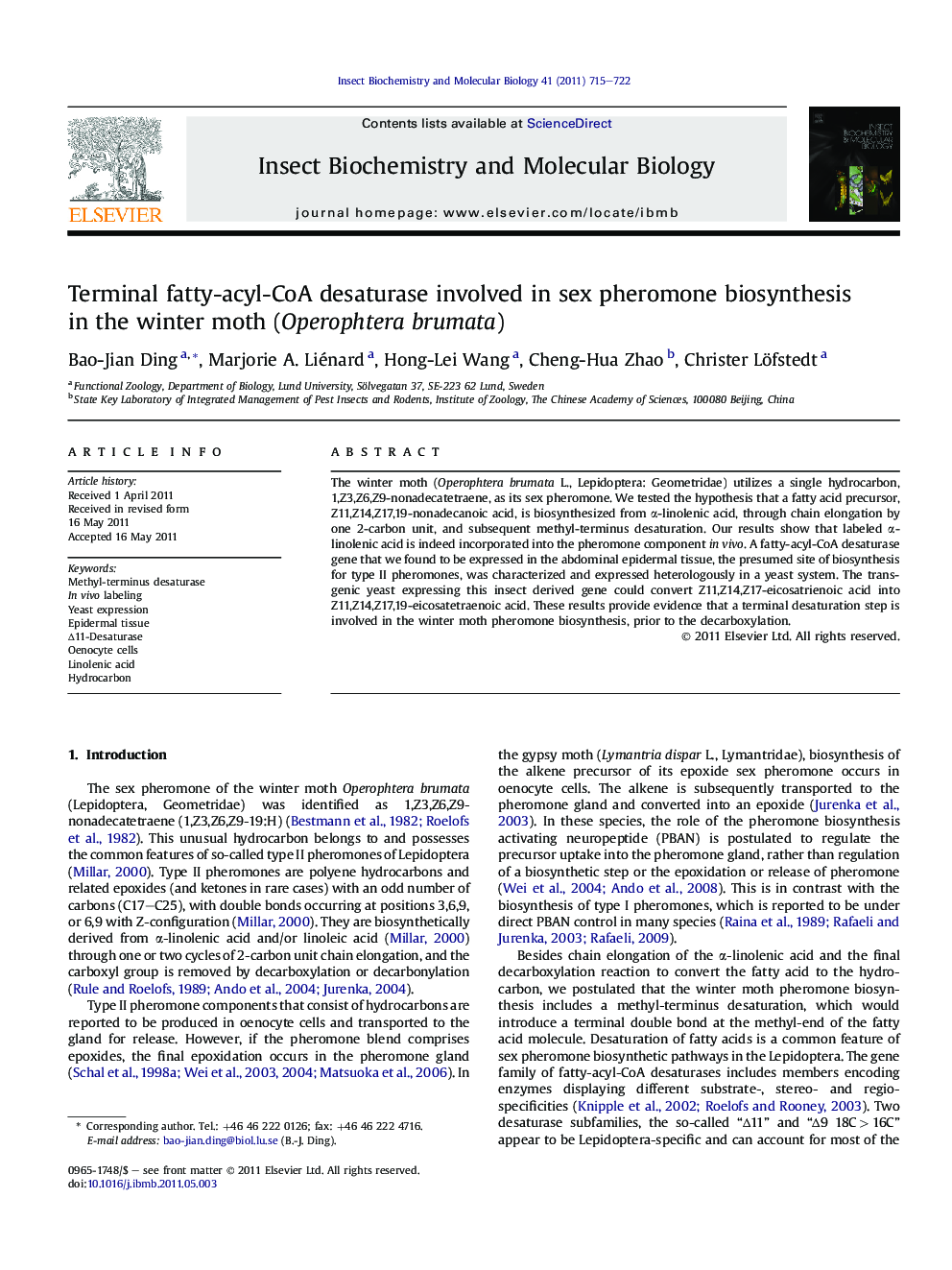| کد مقاله | کد نشریه | سال انتشار | مقاله انگلیسی | نسخه تمام متن |
|---|---|---|---|---|
| 1982387 | 1062283 | 2011 | 8 صفحه PDF | دانلود رایگان |

The winter moth (Operophtera brumata L., Lepidoptera: Geometridae) utilizes a single hydrocarbon, 1,Z3,Z6,Z9-nonadecatetraene, as its sex pheromone. We tested the hypothesis that a fatty acid precursor, Z11,Z14,Z17,19-nonadecanoic acid, is biosynthesized from α-linolenic acid, through chain elongation by one 2-carbon unit, and subsequent methyl-terminus desaturation. Our results show that labeled α-linolenic acid is indeed incorporated into the pheromone component in vivo. A fatty-acyl-CoA desaturase gene that we found to be expressed in the abdominal epidermal tissue, the presumed site of biosynthesis for type II pheromones, was characterized and expressed heterologously in a yeast system. The transgenic yeast expressing this insect derived gene could convert Z11,Z14,Z17-eicosatrienoic acid into Z11,Z14,Z17,19-eicosatetraenoic acid. These results provide evidence that a terminal desaturation step is involved in the winter moth pheromone biosynthesis, prior to the decarboxylation.
Figure optionsDownload high-quality image (60 K)Download as PowerPoint slideHighlights
► First methyl-terminus desaturase characterized, serving in moth mate pheromone communication.
► Terminal desaturase is highly expressed in abdominal tissue, suggesting the site of pheromone biosynthesis.
► In vivo labeling combined with in vitro heterologous expression presented the picture of winter moth pheromone biosynthesis pathway.
Journal: Insect Biochemistry and Molecular Biology - Volume 41, Issue 9, September 2011, Pages 715–722